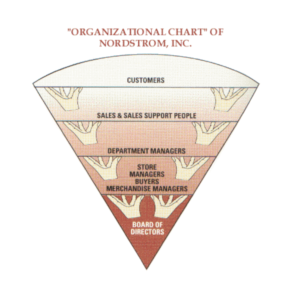Servant Leadership for Building Better Relationships
By James V. Anderson, DMD, Coach/Servant Leader
As dental providers, we encourage our patients daily to achieve the best health possible by offering solutions to care. Building relationships with your patients involves thinking of them long term and that each encounter builds on that relationship. What are their goals for health five years from now? Where does the practice fit into this picture?
Changing your mindset of being the boss/ commander in chief to be a servant to those who work with you and to those you provide care to, can be a huge shift in how you live your life and view your role.
Think of your dental team as being with you long term and what would you do to foster building these relationships just as you would your patient relationships. Patients are always comforted to know that there is a committed team helping them.
The Servant Leadership Institute https://www.servantleadershipinstitute.com defines servant leadership as a set of behaviors and practices that turn the traditional “power leadership” model upside down; instead of the people working to serve the leader, the leader actually exists to serve the people. As a result, the practice is centered on a desire to serve and emphasizes collaboration, trust, empathy, and the ethical use of power. Its primary goal is to enhance individual growth, teamwork and overall employee involvement and satisfaction.
And while this timeless philosophy was recorded as early as 570 BCE – 490 BCE in the writings of Lao Tzu, an ancient Chinese philosopher and writer, servant leadership really began to gain its notoriety in the early 1970s. Since then, proponents of this inspirational leadership style have unlocked purpose and ingenuity in those around them through encouragement and support. They have also enabled subordinates to unlock their innermost potential, which has resulted in overall higher performance and more engaged, fulfilled employees.
As servant leaders, we focus on the growth and well-being of people and their communities and our main purpose is to inspire and equip all those we influence.
Many practices, have the doctor or management entity as the leader and the power in the organization structure. This has been the standard for decades. Even though some practices allow input from employees, the deciding factor on behavior and procedure is instituted by the doctor or owner of the business.
In the traditional leadership role, employees or subordinates look to the boss for approval of all that is done and look to their leaders for inspiration. Why do we stifle creative talents in people with this management structure? Well, it is supposed to eliminate chaos and rogue behaviors by establishing rules that must be followed to achieve order.
Servant leadership doesn’t work for all businesses or all organizations when there is a hierarchy or authoritarian style management in place. A shift in thinking from the CEO and all managers is required. These top down leaders must understand that they are there to serve assistants and hygienists so these incredibly important people succeed with your patients.
An excellent real world example of a servant leadership organization is Nordstrom, inc. Please view the chart below and recognize how “leaders” are at the bottom of the organization, lifting, inspiring, and helping those above them succeed. If only dentists would understand how important this concept is to the success of their practices! Stop yelling at staff! Stop throwing things! Remember, your main role is to lead others, help support and sacrifice for others, so that they will in turn support and serve our customers.

Another servant leadership organization is the Ritz Carlton. They are famous for high customer satisfaction and quality. Every team member at Ritz Carlton is taught and believes that, “We are ladies and gentlemen serving ladies and gentlemen.” It’s imperative that we start serving and sacrificing for our teams to inspire them to do the same for our patients.
Before introducing servant leadership, define your values first. After defining your values think of those that can be improved or enhanced and then live by your values.
The nine values of a servant leader are:
- Values diverse opinions (not looking for “yes men”)
- Cultivates a culture of trust (build on the positive)
- Develops other leaders(lets go of ego for the good of all)
- Helps people with life issues(engages in active listening)
- Encourages people(show trust in their abilities)
- Sells instead of tells(persuades not commands)
- Thinks you, not me (focus on needs of others)
- Thinks long term(what are the benefits for you, the organization or group in the future)
- Acts with humility. (not for personal gain or to diminish others efforts)
A servant leader in dentistry takes the time to actively listen to patients as they discuss their lives and issues with their health. In order for patients to agree to having dental care there must be trust in the providers. Trust is built on ethical treatment, keeping your word and being transparent in all that you do.
Dental Billing Tips and News for Pros; Edition #131






Scott B Dudley
James, it could not be said better. Well done sir, I tip my cap to you. Happy New Year!
Judd Flamm
I wish I had learned about Servant Leadership early in my career! I spend years contemplating how to be a good leader. Servant Leadership is a wonderful summary of how to be a leader worth listening to.
Thank you Dr Anderson for sharing this advice!
Lucinda Lignell
What an amazing place to work – in a dental office that embraces this concept!
Kate Cacciotti
I believe it is this mindset and structure that makes eAssist such an amazing company to be a part of. The unique way upper management and staff work together is what makes eAssist such a success. Everyone works harder when they feel supported and valued, well said Dr. Anderson.